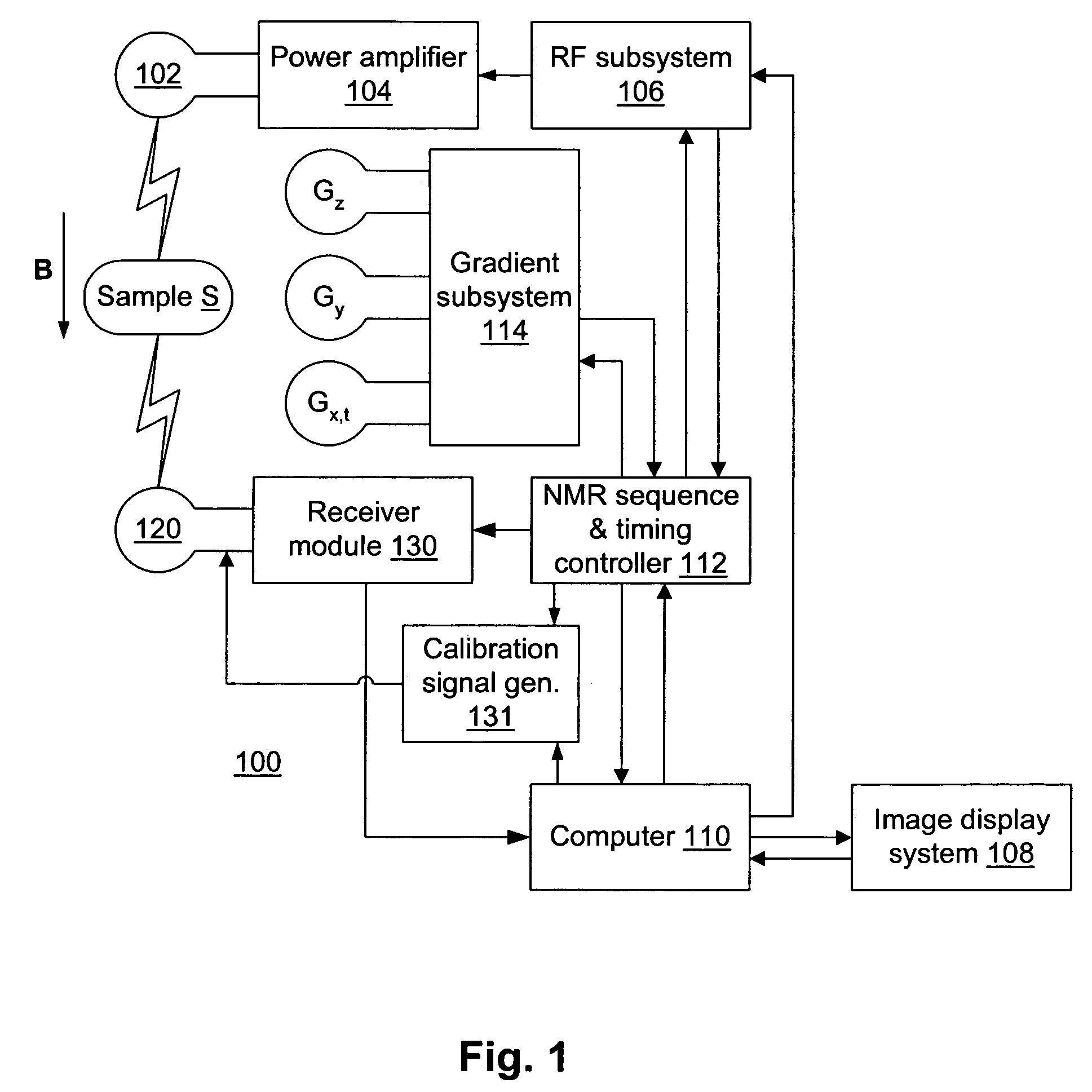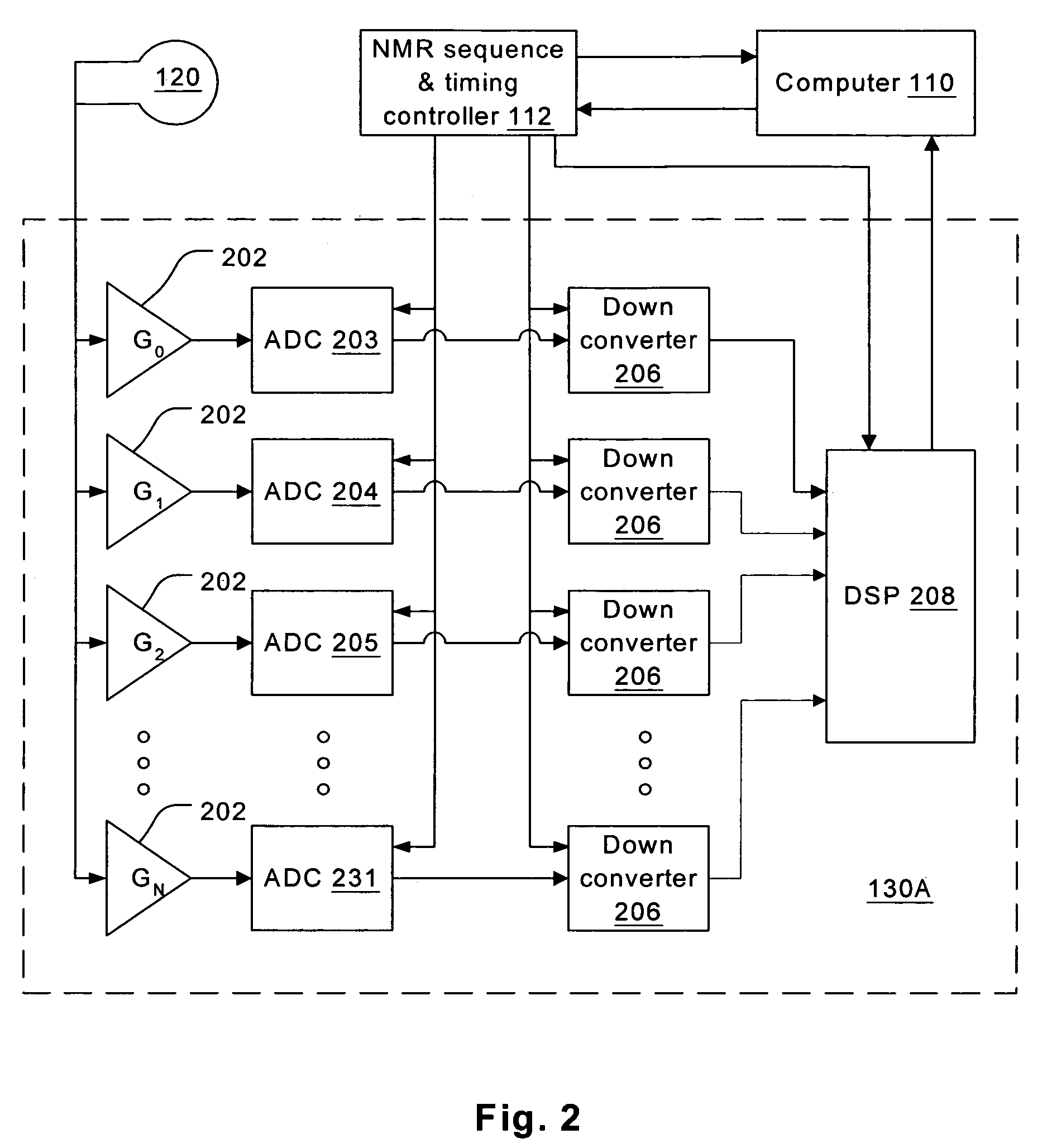Adaptive dynamic range receiver for MRI
a dynamic range receiver and dynamic range technology, applied in the field of analog to digital conversion of signals, can solve the problems of high cost of downstream equipment that uses digital signals, quantization noise, and inability to address quantization noise, so as to avoid the need for costly analog signal processing circuits
- Summary
- Abstract
- Description
- Claims
- Application Information
AI Technical Summary
Benefits of technology
Problems solved by technology
Method used
Image
Examples
Embodiment Construction
[0029]Referring to FIG. 1, a magnetic resonance imaging (MRI) system 100 has a transmitting coil 102 that injects radio frequency (RF) pulses into an imaging volume where a magnetic field B is maintained. The transmitting coil is driven by a power amplifier 104, which is in turn driven by a RF subsystem 106 under control of a computer 110 and a nuclear magnetic resonance (NMR) sequence & timing controller 112. A receiving coil 120 receives magnetic resonance (MR) signals, which are applied to a receiver module 130 for down-conversion to a baseband signal and error compensation. The resulting resonance signal is applied by the receiver module 130 to the computer 110 and image display system 108. Note that a single coil can be employed to transmit the RF signal and to receive the resonance signal. The computer 110 controls the NMR sequence & timing controller 112, which in turn controls a gradient subsystem 114 for the generation of orthogonal linear magnetic fields within the imaging...
PUM
 Login to View More
Login to View More Abstract
Description
Claims
Application Information
 Login to View More
Login to View More - R&D
- Intellectual Property
- Life Sciences
- Materials
- Tech Scout
- Unparalleled Data Quality
- Higher Quality Content
- 60% Fewer Hallucinations
Browse by: Latest US Patents, China's latest patents, Technical Efficacy Thesaurus, Application Domain, Technology Topic, Popular Technical Reports.
© 2025 PatSnap. All rights reserved.Legal|Privacy policy|Modern Slavery Act Transparency Statement|Sitemap|About US| Contact US: help@patsnap.com



